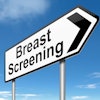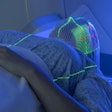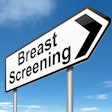
Leaders in diagnostic imaging don't have a crystal ball for what working life will look like after the COVID-19 pandemic. But a couple things look certain for the future: Teleradiology use will continue to accelerate, and the horse is out of the proverbial barn when it comes to working from home.
The world has been living with COVID-19 for more than one-and-a-half years. During the peak of the pandemic, there was a big shift toward working from home, for those who could do so, to stay out of the coronavirus' way.
Thankfully, radiology is well suited to the work-from-home model as imaging studies that don't involve contact with patients may easily be performed on a high-quality workstation outside healthcare facilities.
But prior to the pandemic, quite a few radiologists -- particularly those who work in the federal sector -- weren't able to read at home due to policies designed to safeguard the privacy and security of patient data, said Dr. Eliot Siegel, chief of radiology and nuclear medicine for the Veterans Affairs (VA) Maryland Healthcare System and professor and vice chair of radiology at the University of Maryland. With the pandemic lockdowns and dangers of working onsite, however, policies had to change fast to allow remote reading, Siegel told AuntMinnie.com.
Initially, a big drop in elective procedures at hospitals naturally meant a large decline in the number of imaging exams, which gave radiology departments some time to get up to speed in teleradiology.
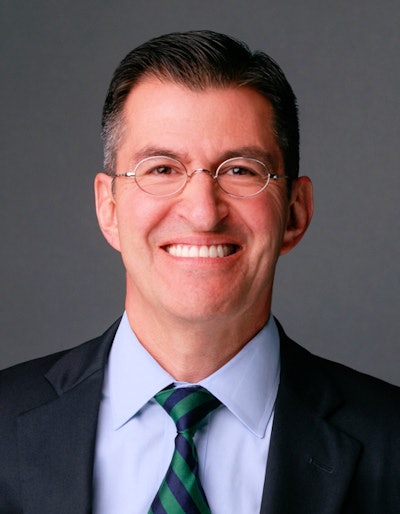 Dr. Alexander Norbash.
Dr. Alexander Norbash.The radiology department at the University of California, San Diego (UCSD) didn't have a preexisting remote reading program and needed to build from scratch, including purchasing the right PACS equipment and ensuring that faculty could get it up and running at home.
"With the shelter-at-home mandate in California, our volume precipitously dropped, and so we were able to put these measures in place," said Dr. Alexander Norbash, chair of radiology at UCSD. "However, the downside of having the volume precipitously drop is that income also precipitously dropped."
The financial decline resulted in delayed payments and bonuses, suspension of recruiting, and early retirements, Norbash told AuntMinnie.com. But teleradiology brought many advantages, notably flexibility of scheduling as volume fell and rose. Faculty members could take on extra cases in off-hours as needed.
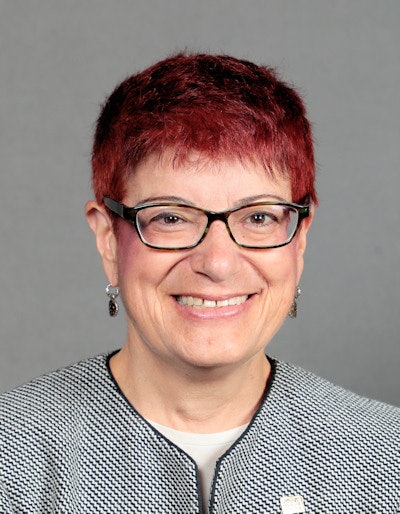 Dr. Carolyn Meltzer.
Dr. Carolyn Meltzer.Currently at UCSD, imaging volume is a bit higher than prepandemic levels. Norbash estimates that at the peak of the pandemic, 50% of studies were read remotely, while from 20% to 35% of cases are read remotely now.
Early in the pandemic, Emory University's radiology department put in a request to double the number of home workstations -- prioritizing computers for those who had childcare or medical issues -- but ended up getting many more. Staff were very appreciative, and remote reading worked out really well, commented Dr. Carolyn Meltzer, chair of radiology at Emory. Consequently, the department maintained flexibility for remote reading as lockdowns eased and staff started to come back onsite to work.
Remote reading by study type
What gets read at home versus onsite depends in part on the study type. Many types of diagnostic imaging procedures can be read at home, but there are some exceptions, including interventional radiology procedures.
Many, if not most, ultrasound practices require an onsite radiologist who can step into the room to operate the imaging probe and generate images themselves, particularly if the technologist has discovered an unsuspected finding or a particularly unfavorable finding, Norbash noted.
Diagnostic mammography is another exception, as physicians need to be onsite to interact with the technologists and counsel patients. Screening mammography currently needs to be performed onsite; one of the barriers is that the dedicated mammography monitors are a lot more expensive, but that could change in the future, Norbash said.
The horse has left the barn
As the lockdowns eased, radiologists went back to reading onsite in facilities, but a higher percentage of studies than ever before is being remotely read, Siegel said.
A small survey of U.S. radiology residency program directors published by Dr. Mohammed Imran Quraishi et al in July 2020 in the Journal of the American College of Radiology showed widespread adoption of teleradiology, beyond call and overnight shifts that were typically done before the pandemic. In the survey, 65.2% of respondents reported an increase in new home installations, and 73.6% reported switching normal daytime shifts to remote readings by internal staff (J Am Coll Radiol., July 1, 2020, Vol. 17:7, pp. 878-881).
"I think that now that we've had more radiologists equipped to read at home and used to reading at home, this is going to be a permanent change," Siegel said.
 Dr. Jonathan Kruskal, PhD.
Dr. Jonathan Kruskal, PhD.The working from home horse has "clearly left the barn," commented Dr. Jonathan Kruskal, PhD, chair of radiology at the Beth Israel Deaconess Medical Center. Remote reading has enabled the extension of coverage hours and flexible work schedules, he told AuntMinnie.com. The ability to work from home also helps alleviate the many impacts of the pandemic on morale, stress, and wellness, he added. Most of his team members are "far happier and safer," Kruskal said.
"Some faculty expressed concerns that their new home workstations would be taken back once things started to settle -- this really let us know how much they appreciated the opportunity," Kruskal commented.
Younger radiologists are expected to want home working options, and remote working is very helpful for caregivers. Meltzer noted that responsibility for childcare disproportionately falls to women and can really interfere with their professional productivity.
"We are very attuned to that," Meltzer said.
The downsides of remote reading
There are, of course, drawbacks to the expansion of remote reading. It may take some time to get used to remote tech support, for example.
 Dr. Eliot Siegel.
Dr. Eliot Siegel."A lot of my colleagues really don't feel comfortable fixing their own workstations or troubleshooting problems with workstations or monitors," Siegel said.
At home, internet connection speeds may be slower, and monitors may be of lower quality compared with what is available at an imaging center or a hospital. However, the quality of new off-the-shelf monitors has been rising and costs have been dropping, so the clinical compromise with equipment in 2021 is probably minimal, Siegel added.
"Things that large teleradiology groups perfected over many years regular nonteleradiology groups had to learn in a really short period of months to make it practical to do image interpretation remotely," Siegel said.
Some radiologists feel strongly that it's great to read at home and stay with their family, while others would be happier not having all of the home distractions.
"I think it's probably been a double-edged sword," Siegel said.
Getting disconnected
 Dr. Max Rosen.
Dr. Max Rosen.Programs like Zoom and Google Meet helped radiologists communicate during the pandemic and were lifesavers generally, but face-to-face contact was a casualty. Social isolation has been a huge issue during the pandemic, said Meltzer, adding that teaching is not as interactive if students are watching lectures on their own time instead of live.
People start to feel disconnected from their department if they are not all coming into the same workplace every day, said Dr. Max Rosen, chair of the UMass Memorial Medical Center and UMass Chan Medical School.
"I think it makes interpersonal communication a lot more challenging," Rosen said to AuntMinnie.com. "People don't feel the same connection to the department, and work becomes much more transactional."
 Dr. Lawrence Muroff.
Dr. Lawrence Muroff.Lack of integration into the medical, social, and political fabric of hospitals puts private radiology groups at risk of losing their contracts, said Dr. Lawrence Muroff, CEO of Imaging Consultants in Tampa, FL. During the pandemic, routine remote reading has become very comfortable, but it's important to remember that to be co-equal specialists in a hospital, radiologists have to be present, he explained to AuntMinnie.com. If radiologists are just interpreting a study without caring about how it is used in patients, they become fungible, he said.
"I think if that occurs, it will be a major shift in how radiology is practiced and what radiologists really do," Muroff cautioned.
Balancing work onsite and at home
Department heads are now considering how much time radiologists need to be spending onsite for citizenship responsibilities, such as meeting in person with other hospital staff and serving on tumor boards.
One of the major lessons of the COVID-19 pandemic is that if you are going to widely deploy home PACS workstations, you need to have very clear policies on their use. For every person reading remotely, that's potentially more work for their colleagues in the reading rooms, tasked with answering the phone, teaching, supervising technologists, and consulting with referring providers, Rosen said. Policies need to acknowledge differences in the types of work people are doing, and everyone in the division should feel it's fair and equitable, he added.
Hint of new postpandemic model
Planning for the future is tough, especially with the uncertainty about coronavirus variants. But experts are counting on an increase in remote reading and hybrid onsite/home-working models.
Teleradiology is going to be a significantly larger part of radiologists' lives, creating opportunities for teleconsultations, Norbash said, adding that he is expecting rapid change in the next three to five years.
For large organizations, like the VA, there is potential to coordinate reading, with practices providing coverage for each other, Siegel said. But he cautioned that the specialty is also going to have to grapple with radiologist shortages in coming years due to early retirements during the pandemic.
UCSD has hired a Bay Area-based radiologist for a telecommute job and is planning alternative shift models to broaden coverage hours, with evening shifts done remotely at home. Physician extenders and robotics could help fill workforce gaps in the future and further enable remote reading. We're now seeing just a hint of the new postpandemic model, Norbash said.
"Crisis planning is going to be something we do. Teleradiology is something we're going to do," Norbash said. "And I think robotics is going to take off as a result of this crisis."

